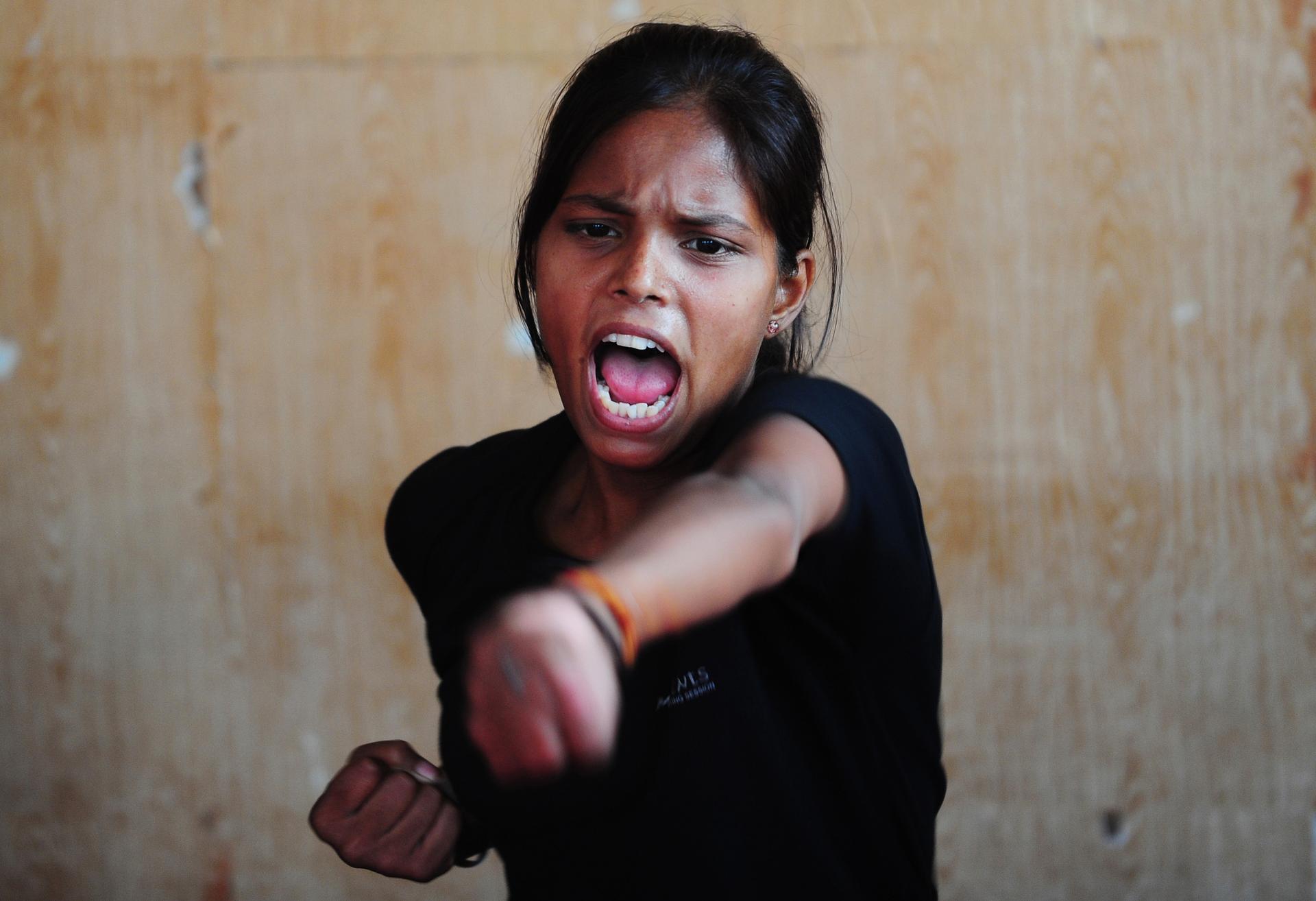Gang rape of US tourist in India brings arrests as legal reform moves slowly
A member of India’s ‘Red Brigade’ takes part in self defense classes at a martial arts academy in Lucknow in May 2013. India’s ‘Red Brigade’ is a group of angry young women challenging deeply ingrained patriarchal mindsets with a message for the country’s sexual predators: change your ways or be ready to accept vigilante justice.
The gang rape of an American woman in the northern Indian town of Manali is another reminder of the dangers of violent sexual assault in India — for Indians and travelers alike.
Three men were arrested Thursday for allegedly offering the 30-year-old traveler a ride Monday night, then bringing the woman to a remote area and raping her.
Despite the pervasiveness of India’s rape problem, only a few cases get international headlines while others, like those of a 5 year-old being raped, tortured, and left for dead in April, or an 11-year-old suffering the same fate last August, remain almost completely buried in local coverage.
Sumit Galhotra, a journalist who specializes in human rights in South Asia, said he has noticed a sharpened spotlight on rape in India by Indian and international media following the fatal Delhi gang rape case of 2012, which caught national attention.
Still, he said, “while some rape cases in India have received widespread coverage in the local media, others have not — particularly rape cases in rural India, which are routinely ignored in the press.”
He went on to explain that other cases in India surfaced around the time of the Delhi case, but did not receive the same kind of attention. As a countermeasure, organizers are using the Twitter hashtag “#2013EndRape” so users can track stories and statistics about rape in various countries and follow developments in India.
Although the social stigma around rape causes considerable undercounting, the National Crime Records Bureau still reports rape as the fastest-growing crime in India for 2011, the most recent available year. The report on India’s 2012 crime records is expected later this month. The India Tribune published a breakdown of the 2011 records, which points out the “high incidence of rape and a low conviction rate for the crime, often caused by a long-winded and lethargic legal process.”
The fatal New Delhi gang-rape of the 23-year-old woman last December highlighted this gaping incident-to-conviction ratio and ignited public protests that resulted in the creation of five “fast-track” courts to prosecute the accused. The fast-track court system, however, is still not fast enough, according to some.
“The Indian judicial system moves at a glacial pace, and I am baffled that the fast-track court in New Delhi has still not delivered a verdict in the rape case,” Galhotra said, going on to explain that the prosecution’s primary focus has instead been on barring foreign journalists from proceedings. “If this is how fast-track courts in India function, I shudder to think how a typical court in the country functions.”
Following the December 2012 event and subsequent protests, the government passed a law increasing prison terms for rapists and calling for the death penalty in cases of rape that result in death or leave the victim in a coma. Additionally, the new law makes stalking, voyeurism, acid attacks and trafficking punishable under criminal law.
The Women Under Siege Project tracks international rape cases closely, recently publishing a blog post by Amelia Hoover Green dissecting how the proper analysis of rape statistics may impact policy. Using the Twitter handle @WomenUndrSiege, the group tweeted an excerpt stating that the goal of international attention is “less rape, not just more awareness, & the way we approach evidence affects the policies we put in place.”
Our coverage reaches millions each week, but only a small fraction of listeners contribute to sustain our program. We still need 224 more people to donate $100 or $10/monthly to unlock our $67,000 match. Will you help us get there today?
